Game: Wargroove
System: Nintendo Switch
Developer/Publisher: Chucklefish Games
Age Rating: E for Everyone 10+ (ESRB)| 7+ (PEGI)
Price: $19.99 | £15.99 | €16.99
Release Date: 1 February 2019 (Switch)
The game is also available on PC, PS4, and Xbox One.
No code was provided for this game, bought it myself
Overall Rating: I like it.
Cute, challenging, and uncomfortably long.
But that’s not my final verdict on Wargroove, Chucklefish’s turn-based strategy (TBS) game that pays homage to Advance Wars. Barely a week after Wargroove’s February release, Chucklefish listened to player complaints and awed its fan base by promising significant improvements to the game in the near future.
You could still pick up Wargroove now, though, if you’ve got the patience for a long, tough campaign—or just to play casual matches with a friend.
Romance of the Four Kingdoms
Wargroove was designed with three experiences in mind: single player (Campaign, Arcade, and Puzzle modes), multiplayer (local and online), and creative tinkering (design your own maps, missions, and cutscenes!).
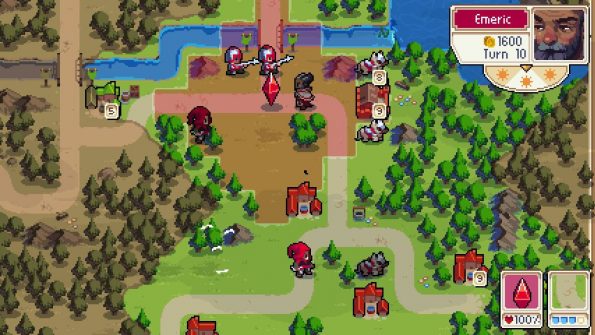
In this review, I’ll focus on the single-player campaign, which begins from the perspective of Mercia, queen of the Cherrystone faction.
Along the way, you unlock opportunities to play other commanders besides Mercia—12 commanders in total, from four factions—one of whom is a fluffy dog! Each commander possesses a unique ability called a “Groove”, but otherwise units are similar across factions.
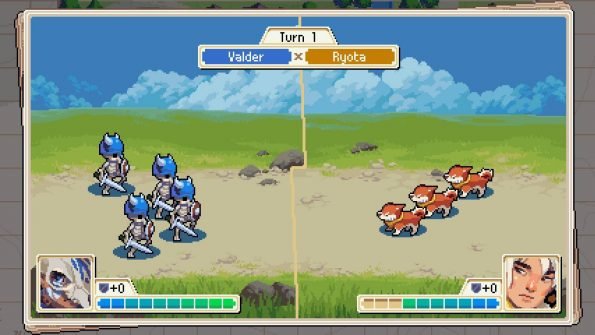
Cherrystone is your standard good-guy medieval kingdom. Felheim is the undead faction that assassinated Mercia’s father. Homeland in crisis, Mercia leaves to seek aid and gains two allies: the Floran faction of hunters (flora-looking fauna) and Heavensong Empire (Japanese-inspired).
The Good
I was first drawn to Wargroove by its adorable character designs and the visual throwback to Advance Wars. The animations are super cute, and the excellent battle soundtrack never gets boring. The voice acting is great, too. (Exception: Mercia’s rival, the tantrum-throwing Ragna is pretty annoying, but then again she’s only 5…)
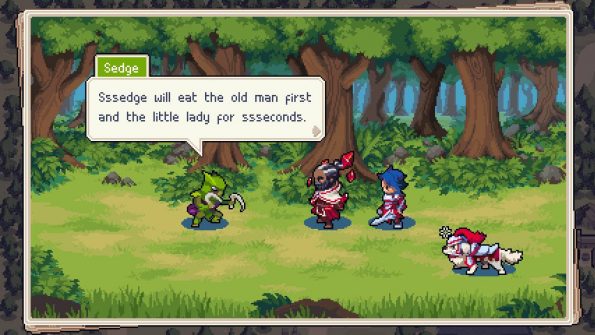
The gameplay is generally enjoyable, though marred by the draggy pace of missions. More on that later.
While I expected commanders’ unique Grooves to play a huge role, they didn’t. But the game made a good choice of focusing on another, more mundane mechanic: critical hits.
Each unit can perform a critical hit under certain conditions. It’s important to make use of this feature and pay attention to surrounding terrain.
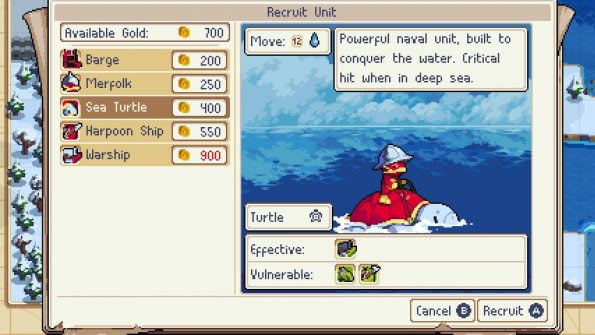
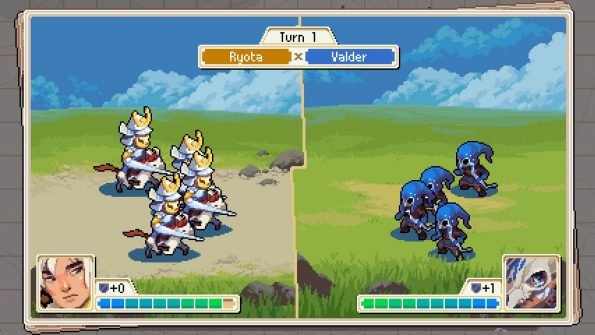
For example, Spearmen deal extra damage when standing next to a fellow Spearman. Archers deal more damage if they forgo movement and simply attack from their current position. Turtles deal a critical hit when they’re in deep sea. Aeronauts are most deadly when positioned above a mountain, and so on.
Each unit is strong against certain unit types and weak against others. So you really have to pay attention to the enemy’s choices when deciding what units to recruit and where to position them.
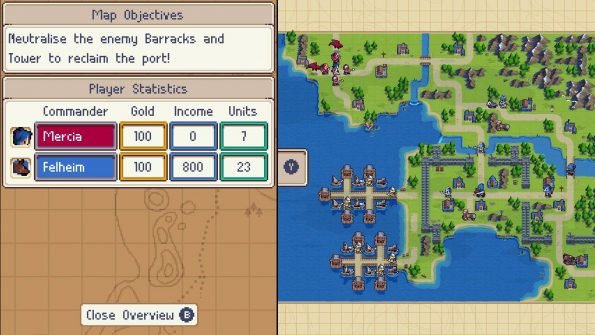
Having more than one way to win (or lose) makes the game more interesting. I like the two-option victory condition found in most missions: You can win by defeating either the enemy commander or the enemy stronghold. Conversely, you lose if your commander or stronghold is defeated.
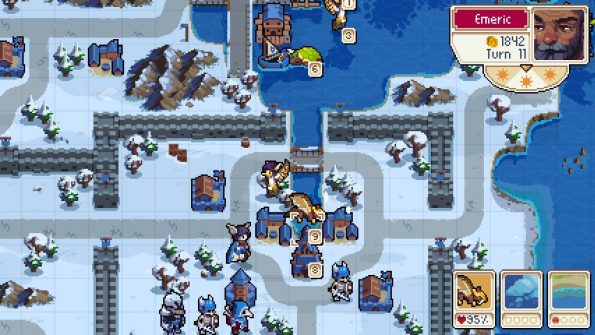
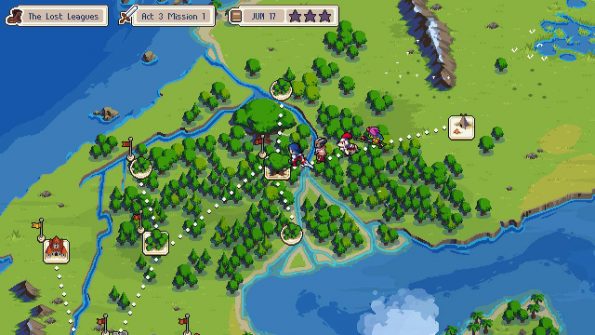
Many missions are optional in the 33-mission campaign. If side missions are too hard, you can skip them—though completing them unlocks commanders in Arcade mode and lore in the game’s Codex, which often contains interesting backstories.
Overall, Wargroove comes packed with a variety of content including multiplayer options and a campaign/map editor. Chucklefish says the game has 50+ hours of single-player content, which is a pretty humble estimate. You’ll definitely get your money’s worth for $19.99.
The Bad (and what Chucklefish will do to fix it)
What keeps Wargroove from being a great game is that missions take too long. My playtime averaged over 1 hour per mission, sometimes closer to 2 hours because I’m a slow decision-maker. I suspect this tends to happen when map sizes are large.
While a 1-2 hour session is just nice for an RPG, it’s too long for a TBS game. Of course, you can exit the game at any time and it’ll save your game-state. But if you fail the mission, you have to start all over again. I’ve “lost” more than several hours of play in this manner.
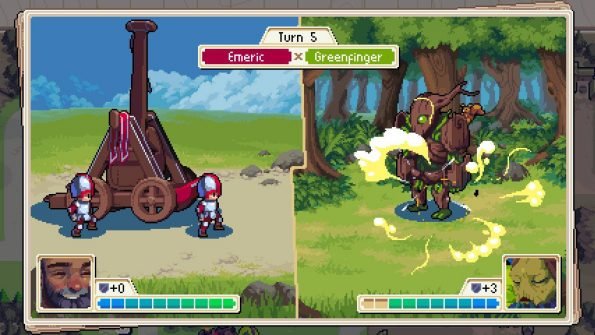
So I’m relieved that Chucklefish is thinking of introducing a checkpoint system in their upcoming update. This would allow you to place one checkpoint that you can restart from if you fail the mission.
The update will also adjust the game’s default difficulty. The present difficulty will be reclassified as “Hard”. I appreciate that, but it won’t change the fact that many missions will probably still take over 1 hour each—which is my main complaint. I’m doubtful this can be remedied.
Still, I’m glad to hear that an option will be added to make units move faster. But I’d prefer if we could entirely skip watching enemy turns.
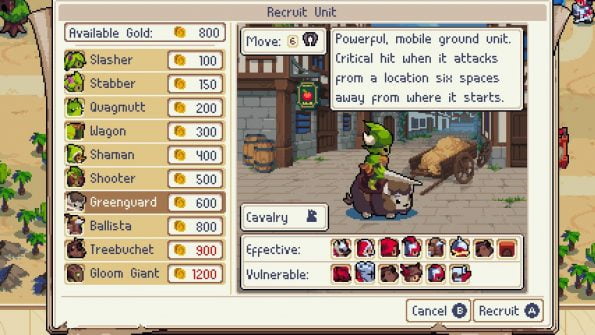
My second main gripe is with unit icons in the chart of damage effectiveness. It’s difficult to identify some unit icons, especially when I was new to the game. Chucklefish’s proposed icon redesign looks great, though!
The So-so
On “Normal” mode, some campaign missions are so challenging that I occasionally look up tips online. Thankfully, you have the option of adjusting each mission’s difficulty.
I decided to persevere with the default difficulty. Initially, I enjoyed the satisfaction of conquering tough missions. But as I approach the campaign’s final battles, I’m feeling less satisfaction than weariness.
I do expect a TBS to be tough, but I’m feeling on the fence about Wargroove’s default difficulty. As I said before, though, my real issue with Wargroove isn’t the difficulty but the game’s pacing.
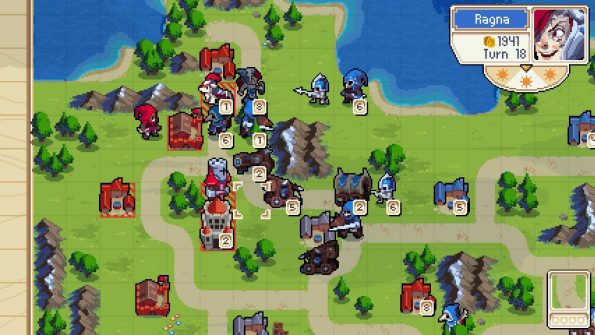
One factor that slows the game’s pace is village mechanics. Villages are buildings you can capture to produce income, for recruiting units. They can also “reinforce” (i.e. heal) units.
To capture a village, you must first whittle down its health. Then, it takes an additional action to actually “capture” a zero-health village. It often takes at least 3 unit actions to capture a full-health village, which is rather long. Meanwhile, reinforcing injured units costs money AND village health. As a result, income and health are often scarce commodities. Perhaps that, on top of large map sizes, results in a slow game.
I was also unimpressed by the game’s simplistic, kiddy dialogue. I assume the dialogue aims at being cutesy, but it comes off as written by kids or for kids. Still, I appreciate that the cutscenes are concise and get the job done.
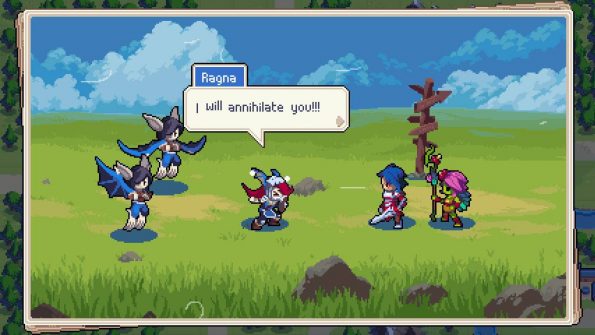
Coming back to difficulty, I should warn you that performance in each mission is evaluated by 1 to 3 stars, depending on how many turns you took to win. Most of the time, I didn’t get 3 stars on first attempt. I’m nearing the campaign’s end and have barely earned 50 stars. Unfortunately, it takes 100 stars to unlock the Epilogue. Stars can be earned from Arcade Mode and Puzzle Mode too, but I think it’s too much work for an epilogue.
The different game modes
Besides the campaign, there are two other single player modes: Arcade and Puzzle.
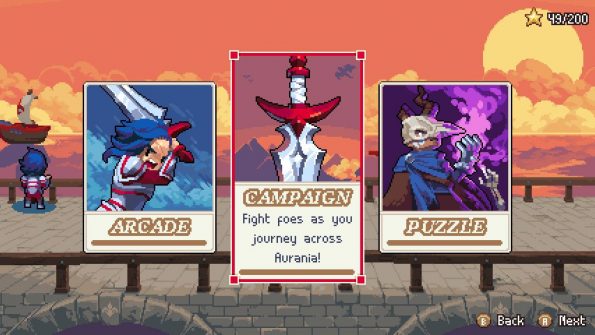
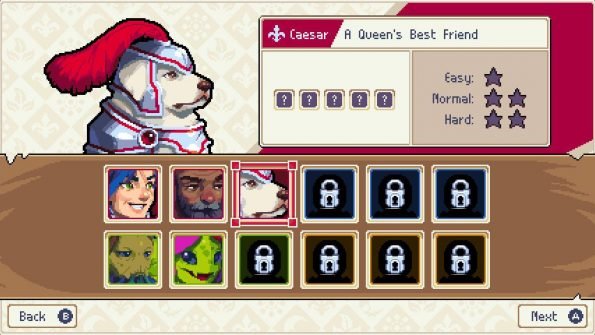
Arcade Mode is unlocked after Act 1 of the campaign. In this mode, you select a commander you’ve unlocked via campaign missions and play them against 5 other commanders consecutively. (You can exit the game midway, though, and it’ll save.) The maps are randomly generated. So far, I’ve tried Mercia’s first match. It wasn’t difficult, but it took 30 minutes.
Puzzle Mode is much more fun than the Arcade, in my opinion. After Act 3 of the campaign, you unlock these 25 puzzles which can be tackled in any order. What the puzzles have in common is that their objectives must be achieved within a single turn. I’ve tried 5 puzzles and most only took 5 to 10 minutes to solve.
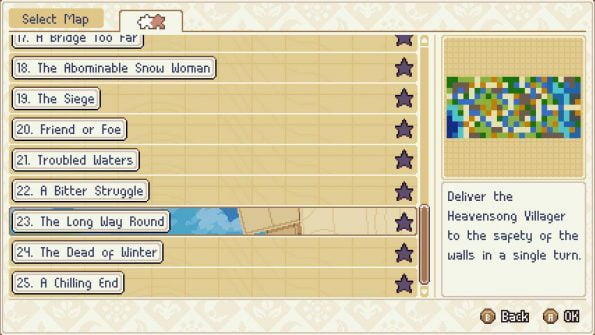
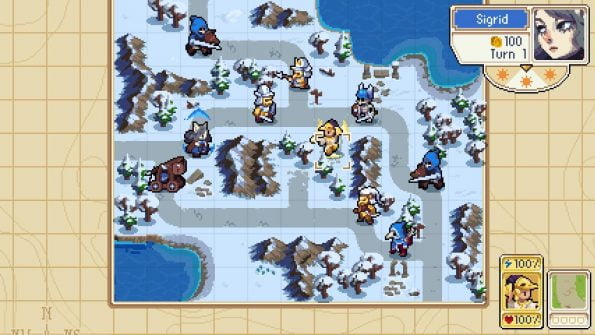
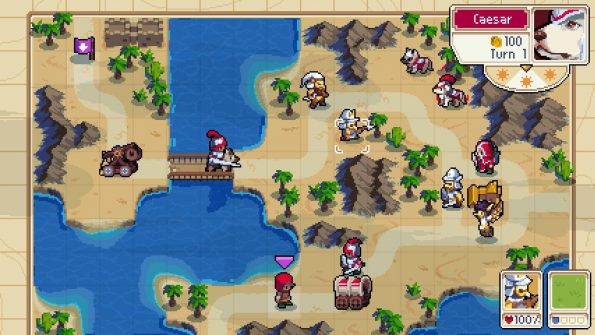

Multiplayer matches can be played locally or online, with up to 4 players and cross-platform (except for PS4). Matches can be played asynchronously—that is, without needing players to be present at the same time.
Local matches can be either co-op or competitive. And you only need one Switch! I’ve played two matches with my husband, in which we passed the Switch back and forth. He complained that the second match took too long (1.5 hours). We didn’t know it then, but you can exit the game and return to a match later.
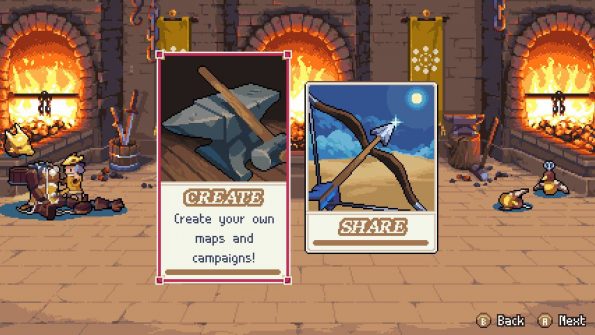
Last but not least, the Campaign and Map Editor is nifty! Design your own maps, missions, cutscenes, and in-game events.
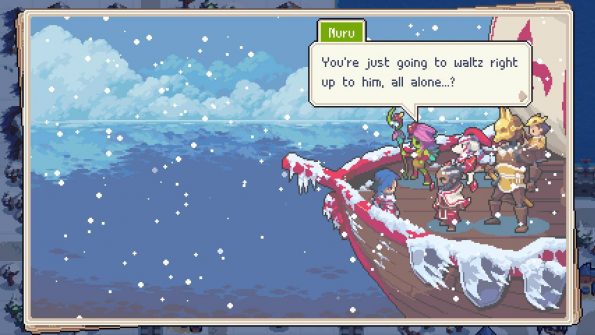
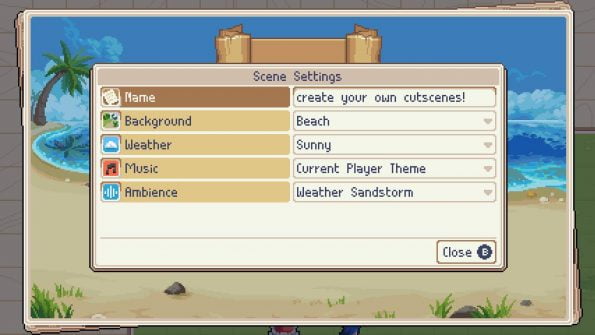

Conclusion
Despite Wargroove’s draggy pace and way-too-long missions, I’m enjoying the gameplay for its fairly tough but usually surmountable challenges. It helps that the character designs and animations are adorable. With Chucklefish’s promised fixes and improvements, Wargroove will be a decent game (at the very least) and well worth $19.99. But don’t expect to play it in short bursts.
Time spent: 33 hours on Campaign mode. Completed 18 out of 21 main missions; 7 out of 12 side missions.


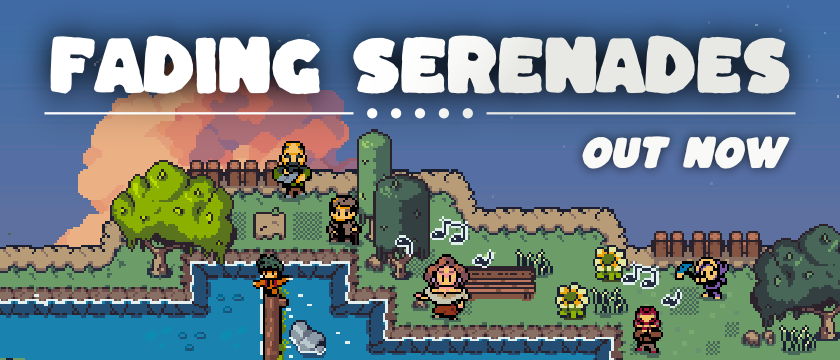
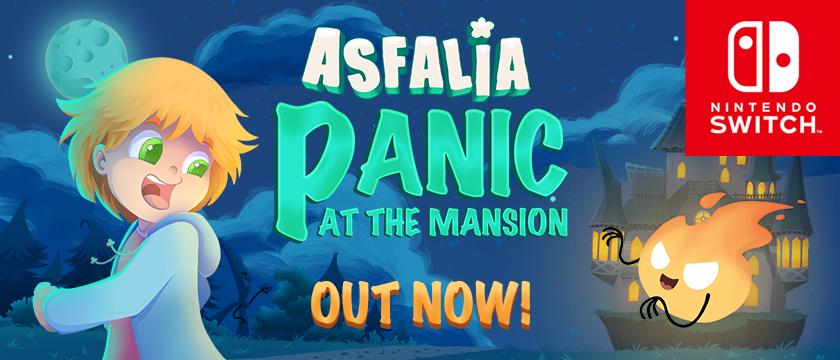

Great review, thanks!